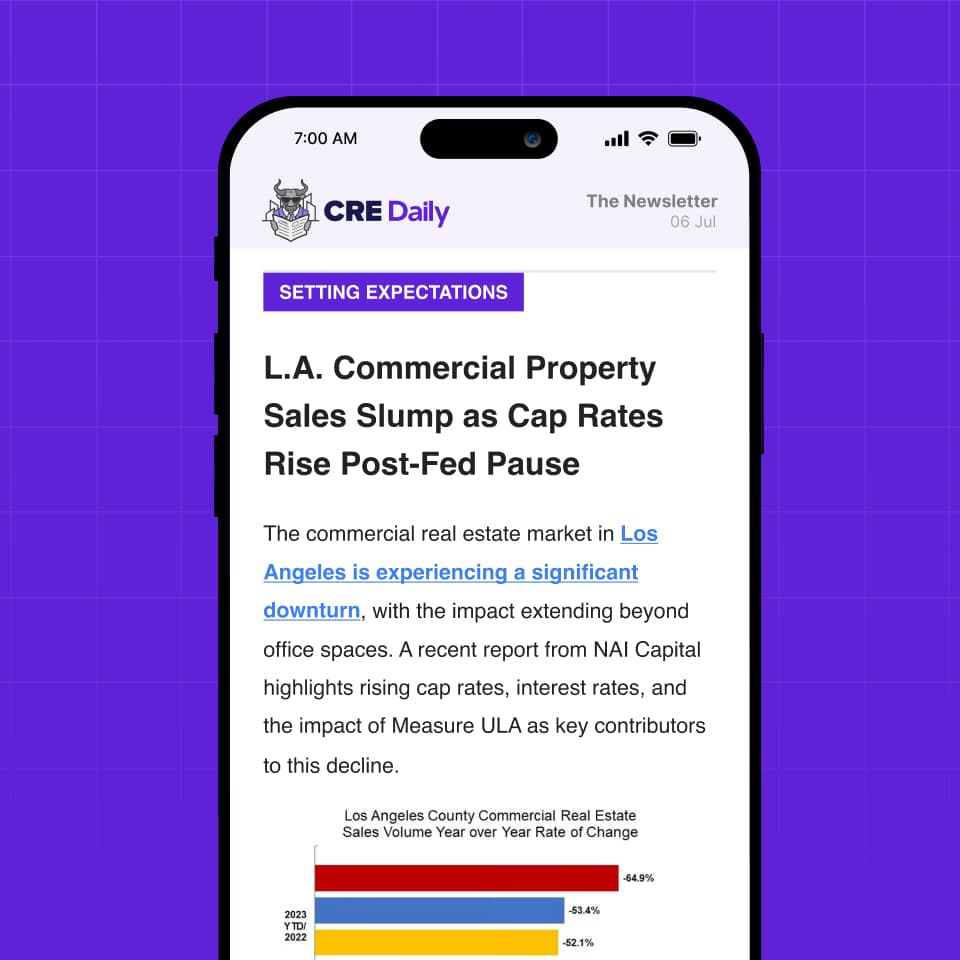- Due to mounting costs from California’s recent wildfires, State Farm is requesting a 38% rate increase on rental properties and a 15% hike for condo owners and renters.
- State Farm already received over 8.7K claims from the January wildfires and expects more to come. The disaster could potentially be the most costly in LA County history.
- The insurer has taken a $2.8B loss over the past nine years and had its financial rating downgraded.
- The rate hike request must be approved by the California Insurance Commissioner under Proposition 103, which allows the commissioner to review proposed increases.
In response to recent devastating wildfires, State Farm is seeking an emergency rate hike that would seriously impact California renters and property owners.
Notably, the insurer holds a substantial share of California’s homeowners insurance market and is facing steep fire losses, per The Real Deal.
State Farm’s Struggles
With over 8.7K claims related to the January fires, the insurer is requesting up to a 38% hike on rental building insurance and a 15% hike for condo owners and renters.
State Farm General has faced significant losses in recent years, including a reported $2.8B deficit over the past nine years, despite gains from investments. The company claims the recent fires in Los Angeles County—described as potentially the costliest in the region’s history—are straining its ability to continue operating at its current financial capacity.
In a letter to California Insurance Commissioner Ricardo Lara, State Farm CEO Dan Krause emphasized the situation’s urgency, requesting the approval of a 38% emergency rate hike on rental properties and a 15% hike for condo owners and renters to help stabilize the company’s finances.
As part of the request, State Farm noted it had already paid out more than $1B to fire victims and anticipates much higher payouts in the coming months. To mitigate the financial impact, State Farm plans to tap into reinsurance from its parent, State Farm Mutual, to cover some of the claims.
Get Smarter about what matters in CRE
Stay ahead of trends in commercial real estate with CRE Daily – the free newsletter delivering everything you need to start your day in just 5-minutes
Controversial Rate Hikes
Consumer advocacy group Consumer Watchdog has disputed State Farm’s claims of financial distress, pointing to the insurer’s reported underwriting profits of $1.4B between 2020 and 2023.
Furthermore, they argue that State Farm’s parent company, State Farm Mutual, holds reserves totaling $134B, raising questions about the necessity of the proposed rate hikes. State Farm already raised homeowner insurance rates by 6.9% in January 2023 and 20% in March 2024.
Not to mention that, if approved, the new rate hikes would affect not only those directly impacted by the wildfires but also homeowners in other parts of California who have not been affected by recent disasters.
Reading Between The Lines
Under California’s Proposition 103, which gives the Insurance Commissioner the power to regulate insurance rates, State Farm’s rate hikes will only be approved if they can be justified based on the financial impact of the wildfires.
The proposed hikes are particularly controversial as they could disproportionately impact homeowners who did not experience wildfire damage. Yet, at the same time, the state is currently working on regulatory reforms that would shift the basis for rate hikes from actual fire losses to future damage estimates, potentially allowing for even higher hikes overall.
Consumer Watchdog’s Carmen Balber raised concerns that the broader state population would bear the burden of any of these hikes, arguing that regulatory reforms should ensure rate increases are fair and targeted only at those areas directly affected by the fires.
Looking Ahead
As the California Department of Insurance reviews the proposed rate hikes, stakeholders—State Farm, consumer advocates, and policymakers—will be closely watching the decision.
While State Farm maintains that these rate increases are necessary to stabilize its finances and continue offering coverage in the state, critics argue that the insurer’s substantial reserves and recent profitability suggest that the hikes may not be justified.
The outcome of this debate could set a significant precedent for the future of insurance rates in California, and in any state prone to natural disasters, like Florida.











